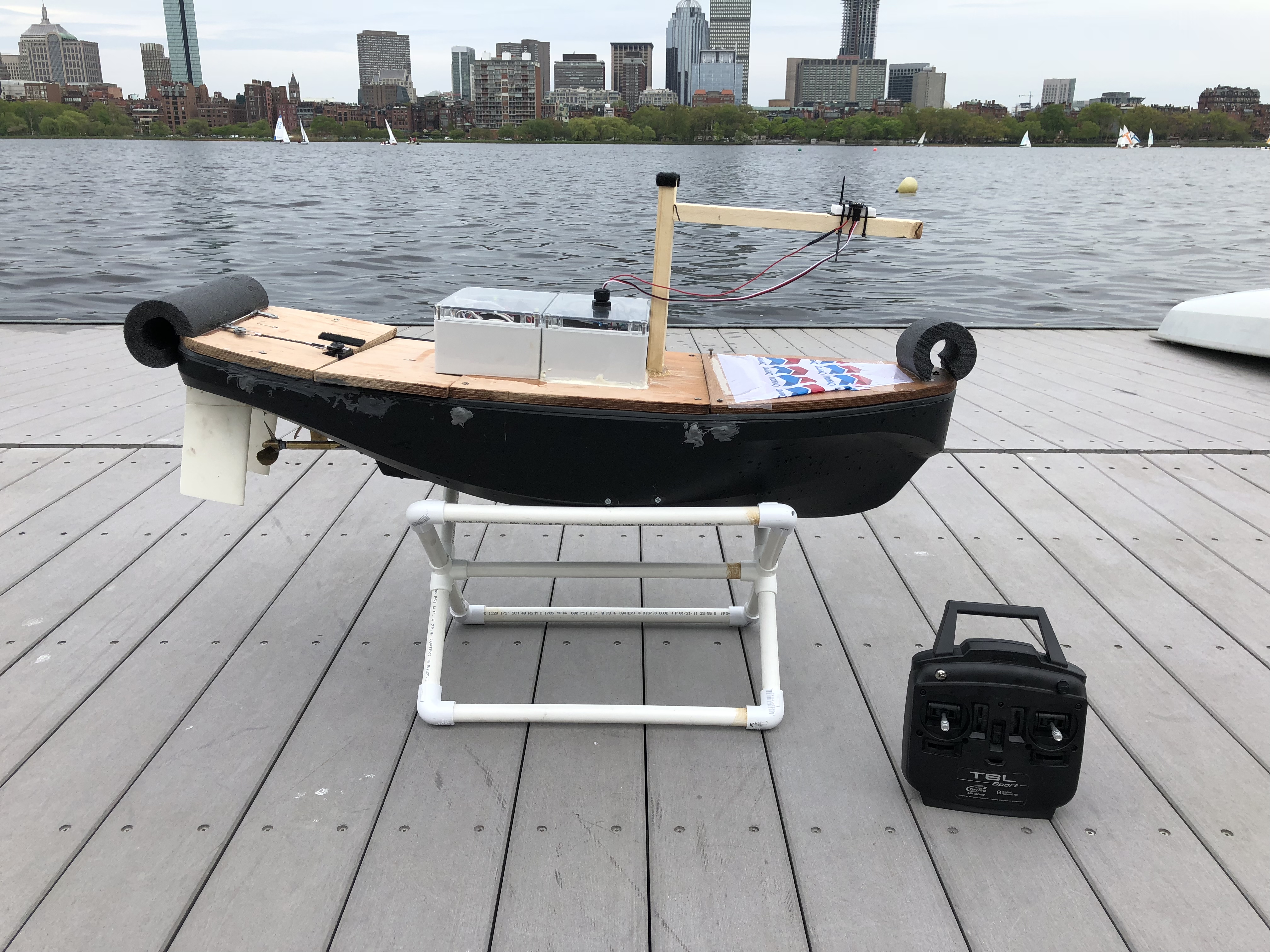Autonomous Boat

For MIT’s 2.017, Design of Electromechanical Robotic Systems, myself and two teammates designed and tested an autonomous boat meant to complete navigation tasks on the Charles River. The boat was equipped with:
- A remotely operated Raspberry Pi running ROS
- Arduinos for motor control and sensor input
- IMU and GPS modules
- Ultrasonic proximity sensors
- Relay switch to switch between manual and autonomous control
My Role
I was team lead and electronics lead. As team lead, I was in charge of our overall design plan and execution. As software and electronics lead, I was in charge of:
- Designing and integrating the electromechanical system consisting of the provided motors and 12V battery, onboard sensors, and onboard processors (Arduino and Raspberry Pi) for sensor data processing and motor control.
- Programming the autonomous sensor data processing, motion planning, and control to complete the navigation tasks at hand.
This project was an exercise in using the following tools and techniques:
- The overall system design process (FRDPARRC - Functional Requirements, Design Parameters, Analysis, Resources, Risk, Countermeasures).
- Implementing ROS on a system from scratch.
- Electrical system design and integration - interfacing between Arduinos, Raspberry Pis, and various sensors.
- Implementing an Infinite Impulse Response Filter for noisy magnetometer data.
In the end we were able to complete two of the three autonomous tasks: navigate along a straight line in the cardinal direction of our choice and navigate to a GPS coordinate provided to us on-site.